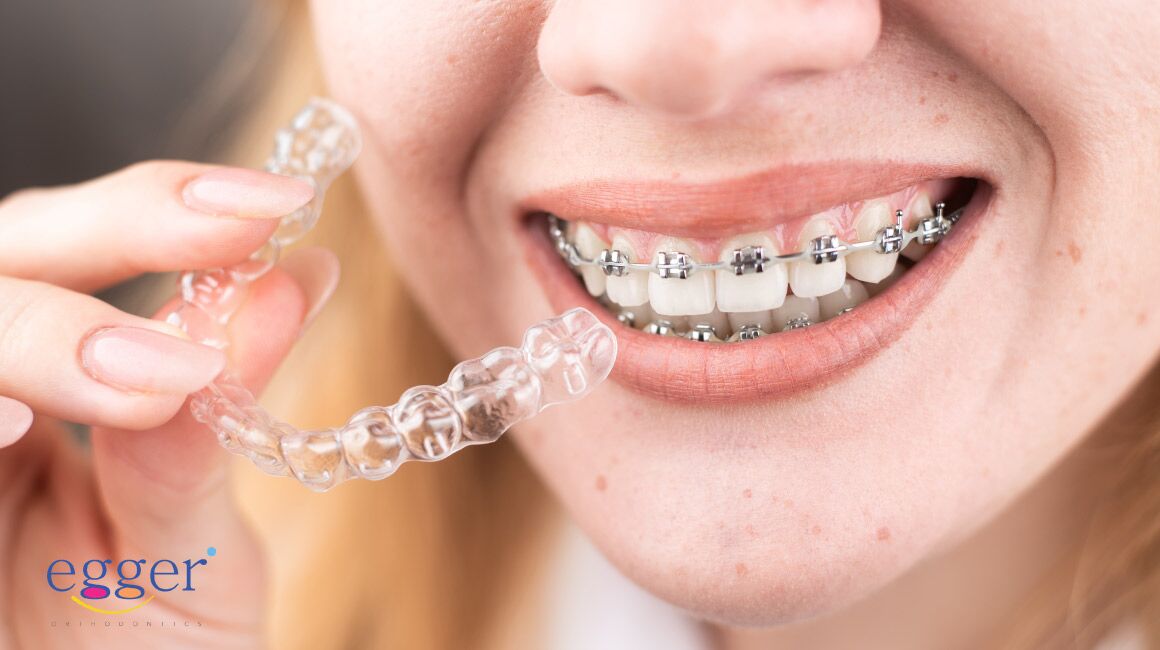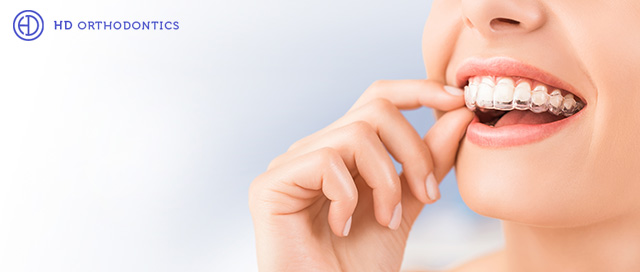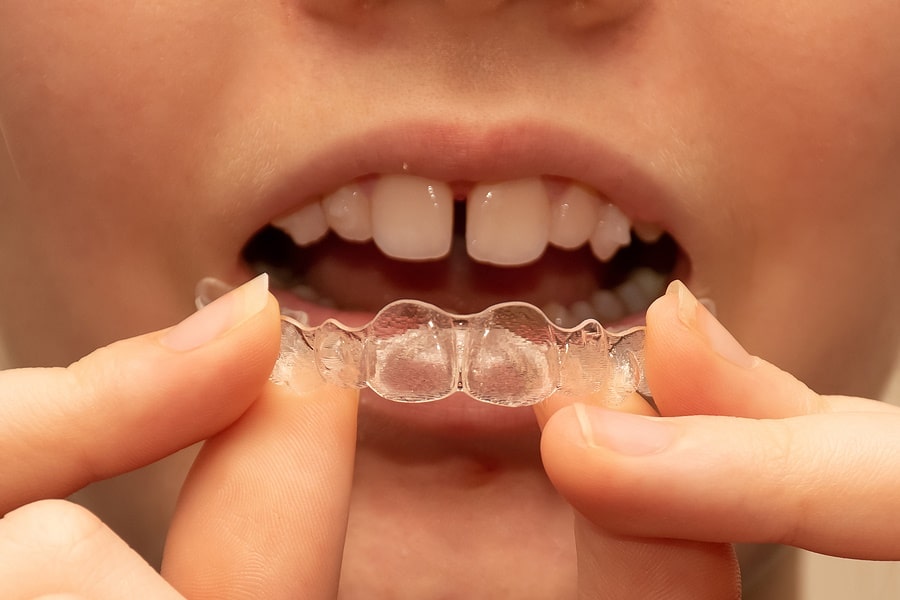What to Anticipate During Your Invisalign Journey: A Comprehensive Introduction
Invisalign vs. Conventional Dental braces: Which Alternative Is Right for You?
When considering orthodontic treatment, the selection in between Invisalign and standard dental braces offers several essential factors that warrant careful assessment. Invisalign provides a discreet choice with detachable aligners, while conventional dental braces give an extra visible yet effective remedy for serious misalignment.
Overview of Therapy Choices

On the other hand, conventional dental braces consist of metal braces and cords that are bonded to the teeth. This technique uses constant stress over time to accomplish placement. While effective for complicated orthodontic concerns, standard dental braces require routine sees for adjustments and can position obstacles in maintaining dental hygiene as a result of the trouble of cleaning about brackets and cables.
Both alternatives have their values, and the selection frequently rests on certain oral problems, lifestyle preferences, and individual conformity. Eventually, speaking with an orthodontic expert is important for determining the most suitable treatment plan tailored to private requirements. Recognizing the nuances of each choice can dramatically affect the total success of orthodontic therapy.
Aesthetic Considerations
A substantial aspect influencing the selection between Invisalign and conventional dental braces is the aesthetic appeal each therapy supplies. Invisalign aligners are crafted from clear plastic, making them essentially unnoticeable when worn.
On the other hand, conventional dental braces contain steel braces and wires, which can be extra visible. While developments in orthodontic technology have resulted in the growth of smaller brackets and colored elastics, typical dental braces still preserve an even more noticeable account. For some individuals, the exposure of dental braces may deter them from seeking essential treatment.
Inevitably, the choice in between Invisalign and traditional braces might pivot on personal choices concerning looks. Patients who focus on discernment typically lean toward Invisalign, while those who are much less worried regarding exposure may choose typical braces. Comprehending the visual implications of each choice is essential for making a notified choice that aligns with one's way of life and choices.
Convenience and Convenience

In regards to ease, Invisalign aligners are detachable, allowing clients to enjoy their preferred foods without restriction and keep ideal oral health. Cleaning and flossing are simplified, as the aligners can be obtained during these routines, whereas traditional dental braces need cautious navigating around wires and braces.
In addition, Invisalign's progressive system permits less orthodontic brows through. Individuals typically receive several sets of aligners simultaneously, which can simplify the treatment procedure and decrease time invested in the orthodontist's chair. On the other hand, traditional braces necessitate routine modifications, making them less practical for those with busy routines. Invisalign. Overall, the comfort and ease of Invisalign make it an attractive selection for lots of individuals seeking orthodontic therapy.
Treatment Duration and Efficiency
While both Invisalign and typical braces work in correcting dental imbalances, the period of treatment can vary significantly between both options. Typically, Invisalign treatment can take anywhere from 12 to 18 months, depending upon the intricacy of the instance. The clear aligners work by slowly moving teeth into their desired settings, and regular follow-ups with an orthodontist help ensure development stays on the right track.
On the other hand, traditional braces often require a longer commitment, usually ranging from 18 months to 3 years. This results from their set nature and using braces and cords, which can be extra efficient for severe misalignments and intricate instances (Invisalign). The treatment efficiency of standard braces is well-documented, as they permit accurate modifications and greater control over tooth movement
Inevitably, the selection in between Invisalign and standard dental braces may rest on both the awaited therapy hop over to here period and the particular dental issues at hand. Consulting with an orthodontist is crucial, as they can provide customized suggestions based on individual demands, making certain the chosen approach lines up with wanted durations and end results.
Cost Comparison and Insurance Policy Alternatives
Expense plays a substantial function in look at this now the decision-making process for people considering orthodontic therapy, whether choosing Invisalign or conventional dental braces. On standard, the price of Invisalign varieties from $3,000 to $8,000, while conventional dental braces commonly cost in between $2,000 and $6,000. Aspects influencing these costs include the intricacy of the case, the period of treatment, and geographical place.
Insurance protection can considerably impact out-of-pocket expenditures. Many oral insurance strategies provide partial protection for orthodontic therapies, but the specifics can differ widely. It is vital for people to evaluate their insurance plans to determine the degree of coverage for either option. Normally, traditional braces might be more often covered by insurance coverage plans contrasted to Invisalign, which some insurance providers classify as an aesthetic treatment.
Additionally, several orthodontic methods supply adaptable layaway plan, making both treatment options much more obtainable. Patients should ask about prospective financing options and discounts for upfront repayments. Assessing the overall expense, including insurance coverage benefits and payment plans, is essential for making a notified decision that aligns with both aesthetic choices and spending plan factors to consider.

Conclusion
In summary, the choice between Invisalign and conventional dental braces rests on numerous aspects, including aesthetic choices, convenience, therapy period, and expense. Invisalign offers a discreet, detachable alternative that promotes dental hygiene and nutritional adaptability, while standard braces may be better for complicated dental concerns and usually come with a reduced price factor. Eventually, assessment with an orthodontist is important to assess specific scenarios and identify one of the most ideal therapy option for achieving optimum dental placement.
When thinking about orthodontic treatment, the option between Invisalign and standard braces offers a number of important aspects that merit mindful examination.Comparing Invisalign and typical more braces reveals unique treatment choices for orthodontic modification.While both Invisalign and traditional dental braces are reliable in dealing with dental imbalances, the duration of therapy can differ dramatically between the 2 options.Expense plays a substantial role in the decision-making process for people considering orthodontic therapy, whether opting for Invisalign or standard dental braces.In summary, the option in between Invisalign and traditional braces pivots on multiple aspects, consisting of aesthetic preferences, convenience, therapy duration, and price.